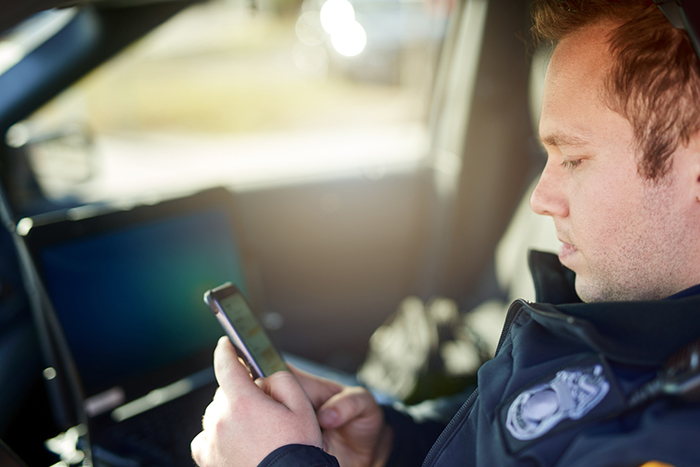Mobile Apps Police Use Today

Police departments are always looking for ways to help their officers do their jobs better, smarter, more efficiently and safely. Of primary importance is communicating information accurately and quickly between dispatch and the officers in the field. When officers arrive at a scene, it is important for them to have as much background or context as possible about the situation and persons involved. Technology plays a pivotal role in those efforts so, in recent years, industry has seen police cruisers and dispatch offices equipped with tools such as Computer-Aided Dispatch, laptops, and Global Positioning Systems.
Mobile technologies are increasingly important because officers are often on the go, away from their offices or vehicles, to support their efficient and effective job performance. More and more police departments are empowering their officers with mobile devices, such as smartphones and tablets, to help officers do their job more effectively and safely, wherever they are located.
Hand in hand with those devices comes a plethora of mobile applications that drive law enforcement productivity. Mobile fingerprinting, for instance, allows officers to complete processing work while in the field and reduces unneeded travel back to the station. Rather than bringing in a suspect to be fingerprinted, officers use a small, portable fingerprinting device on the spot, and can ID a person within minutes.
DOWNLOAD Guide to Video Content Analytics for Law Enforcement
Another mobile app for law enforcement extends the computer-aided dispatch functionality onto different devices, so a dispatcher can both easily see and understand the status of all units being dispatched and also track officers first by their vehicle, then by their phone and then their smartwatch as they move. The layered approach enables officers to confidently advance their post-event investigation or incident response, knowing that dispatch can track them dynamically through multiple devices.
Similarly, mobile video management systems (VMS) enable field officers to access and view surveillance footage and feeds while on-the-go. Yes, while mobile video surveillance is highly convenient, it is still subject to the inefficiencies of standard video surveillance, namely human error and distraction, which leads to critical details being overlooked. Even when officers can stay focused, it is easy to miss significant objects that appear – especially if there is a lot of activity in the area being captured. Usually, the sheer volume of video captured makes even a cursory review of all the video impossible – and comprehensive monitoring of the overwhelming quantities of video is an even greater challenge.
To extend the value of a video surveillance network and mobile access to it, police agencies can adopt video content analytics (VCA) so that officers don’t have to actively watch video feeds and footage. Video investigation solutions allow dispatchers and officers to collect intelligence and evidence from video, view hours of footage in only minutes, and pinpoint objects and persons of interest by searching according to specific criteria.
Intelligent video technology continues to evolve to extend the power of video content analysis into the field, to increase situational awareness and investigation productivity. By offering officers access to video analytics on the move, police agencies enable officers to search for critical details from video evidence while at the crime scene, using a smartphone. In the immediate aftermath of an incident, the field officer can derive intelligence from video without having to return to the intelligent crime center or control room to process video resources.
Natural textual understanding-based mobile video analytics solutions leverage chatbot functionality to enable field officers to quickly recall specific information from video. For example, if an officer reports to an incident at a certain location; s/he can dynamically search for people or vehicles in the video footage in the hours prior to the incident from the relevant on-site cameras. The officer can filter that video further by verbally searching for “all men wearing blue” that appeared within the relevant time period. By rapidly reviewing and identifying the critical video evidence, the officer can send the original video with the relevant details to other officers in the field, enabling immediate “BOLO” (“be on the lookout”) alerts, for example, to accelerate the investigation.
As the technology landscape evolves, law enforcement agencies have many mobile applications from which to choose. When deciding which apps make the most sense, departments must consider not only which technologies are most affordable, but which ones deliver the greatest ROI in terms of productivity as well as officer and public safety. Mobile video analytics technology is a gamechanger for law enforcement, because it leverages existing video monitoring systems to provide officers in the field with immediate access to vital information. This reduces dependency on the station or dispatch office, improves officer efficiency, and improves safety for both police officers and the general public.
More on video analytics for law enforcement.
Signup to receive a monthly blog digest.